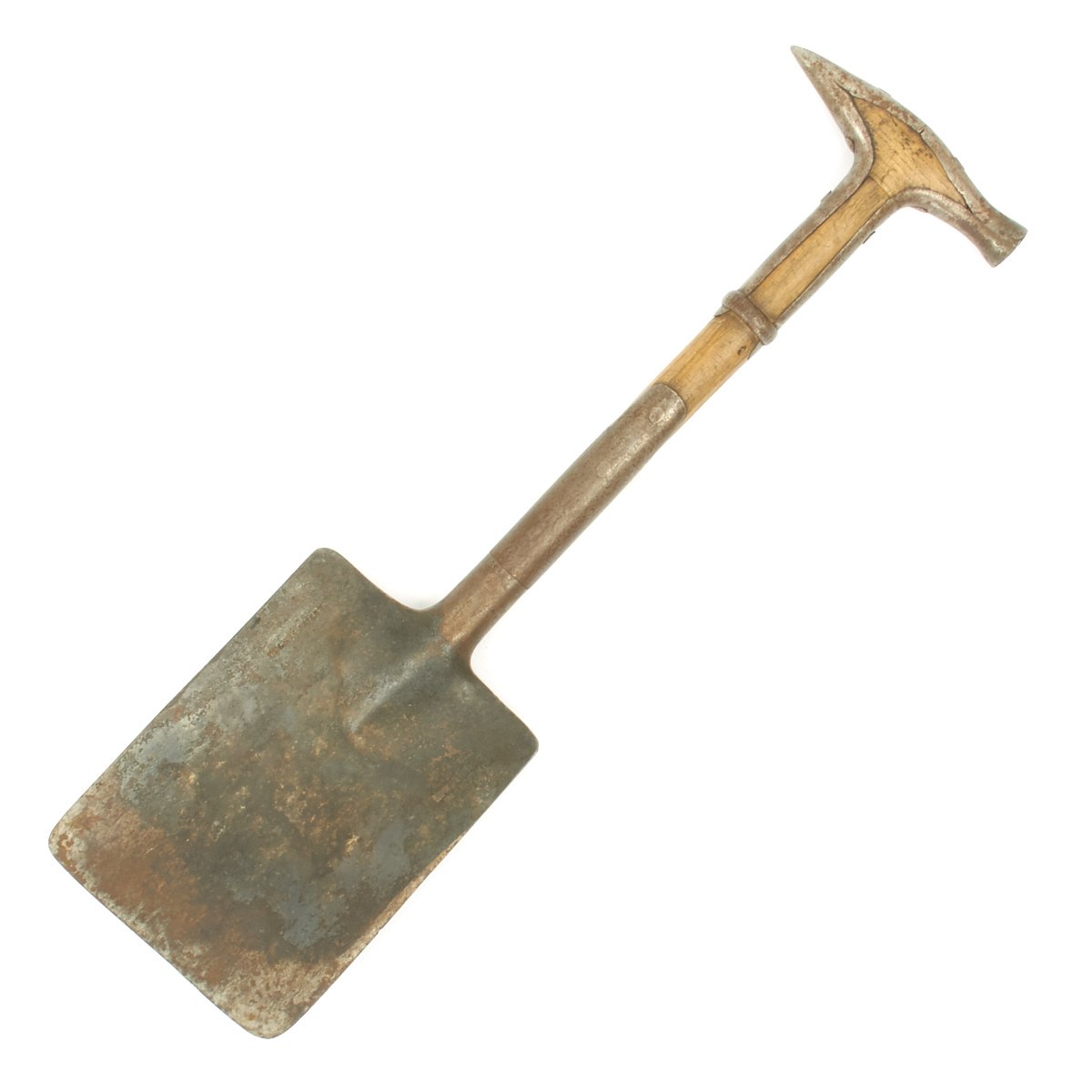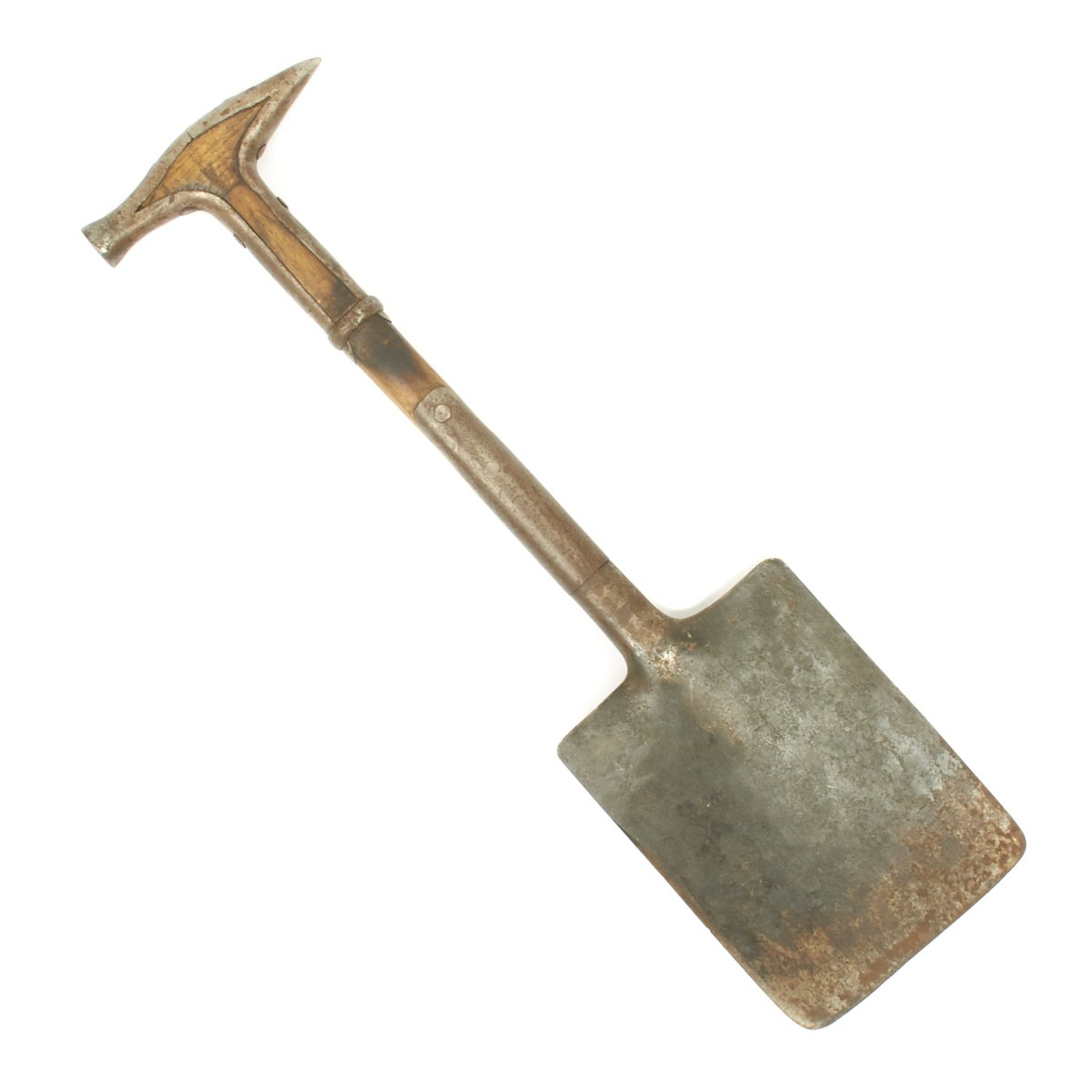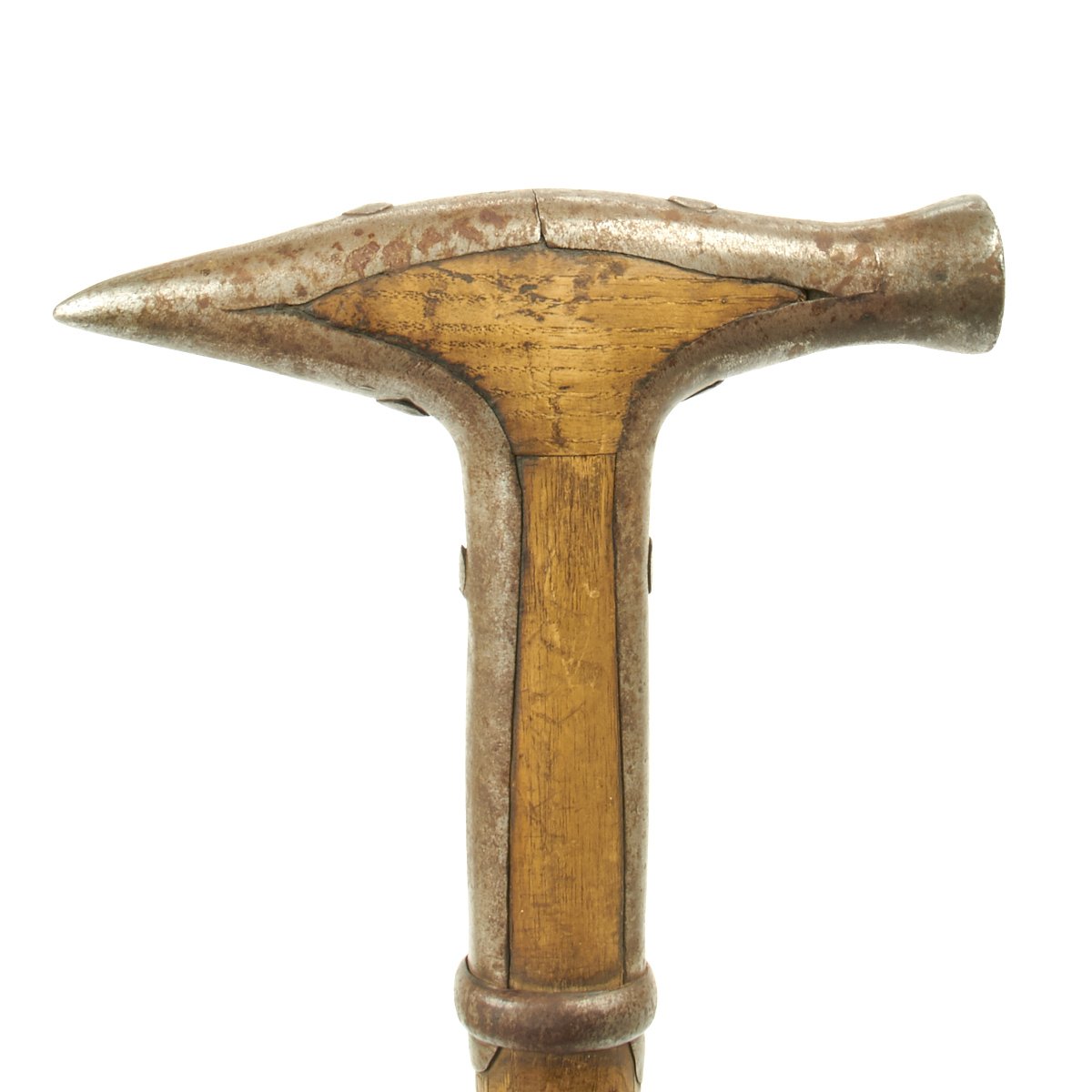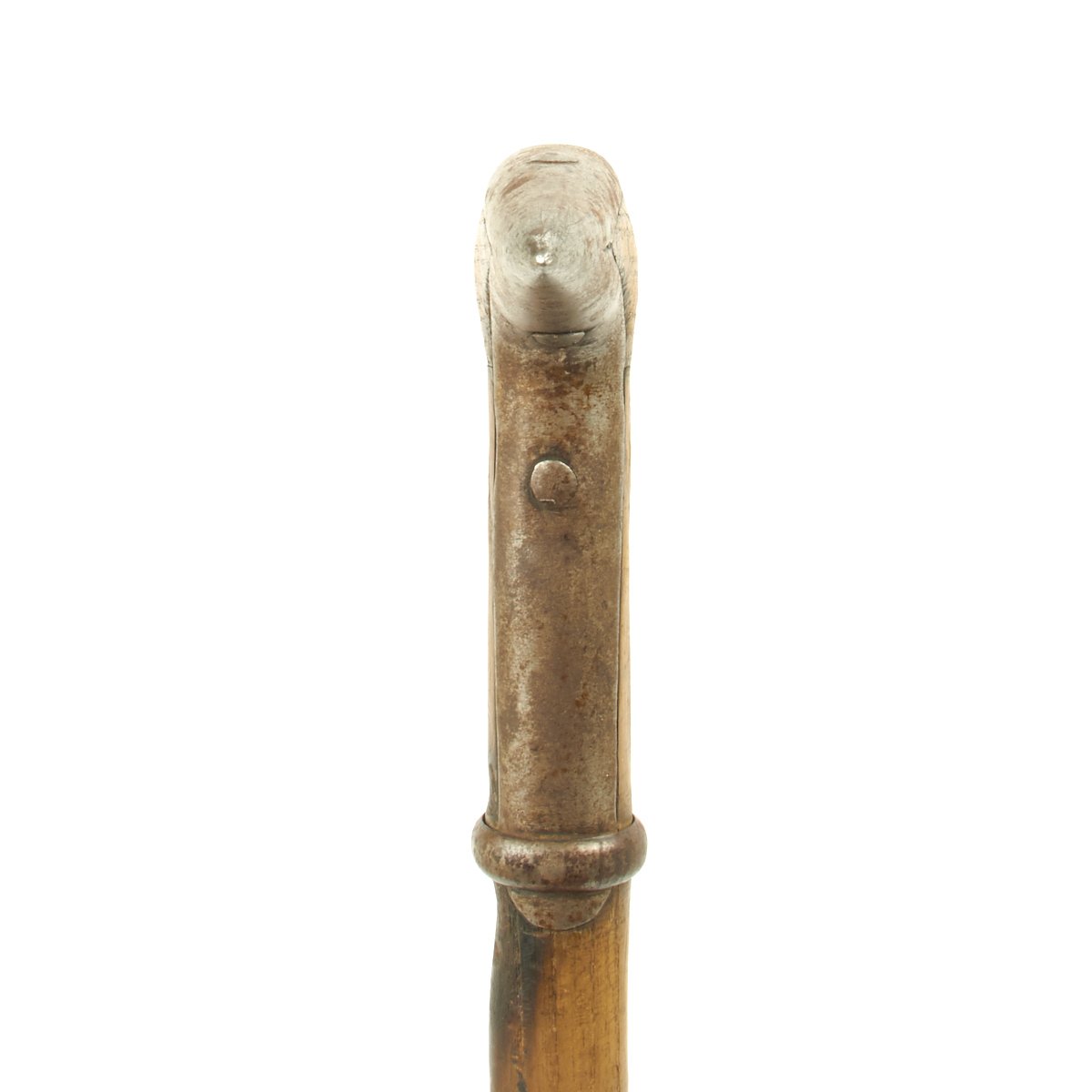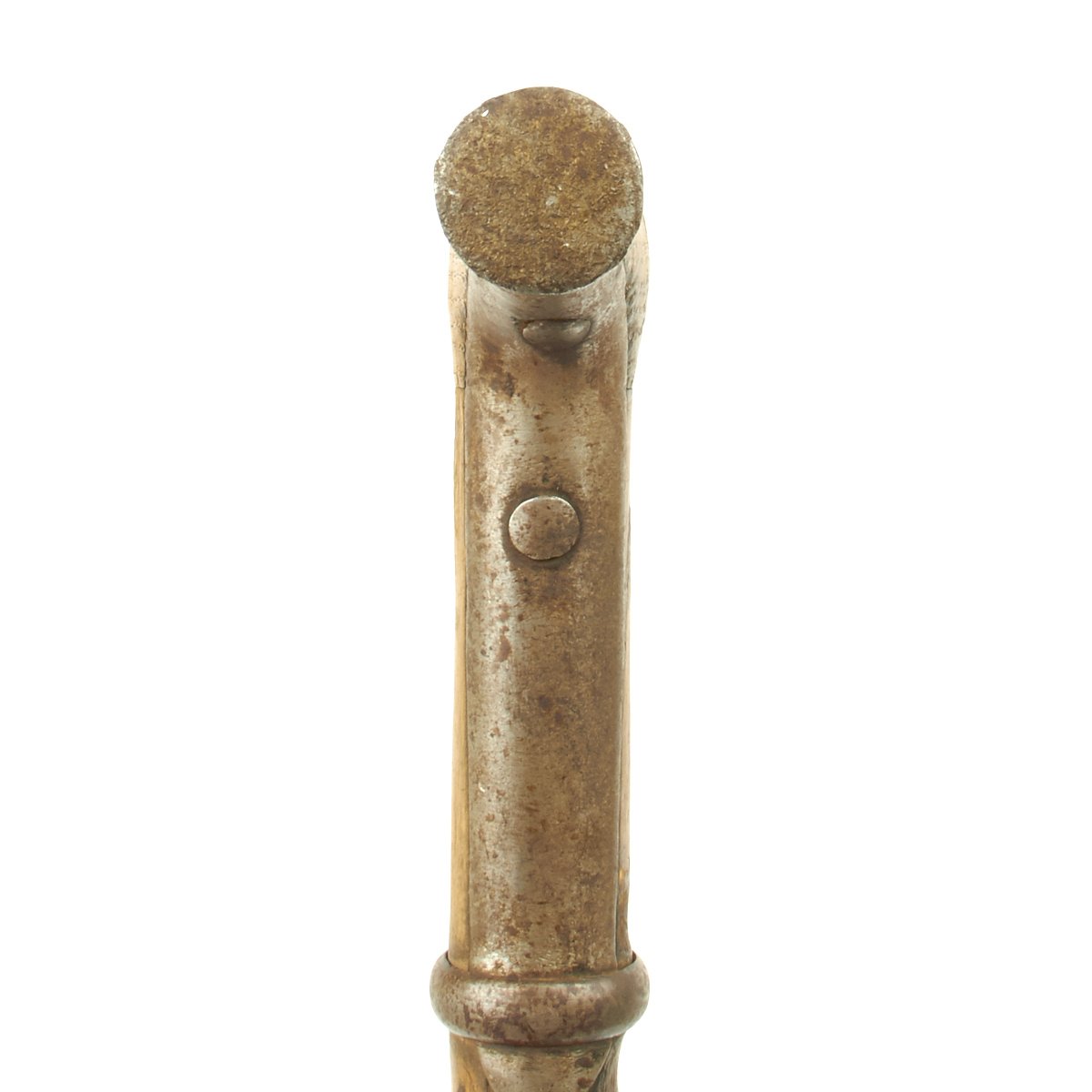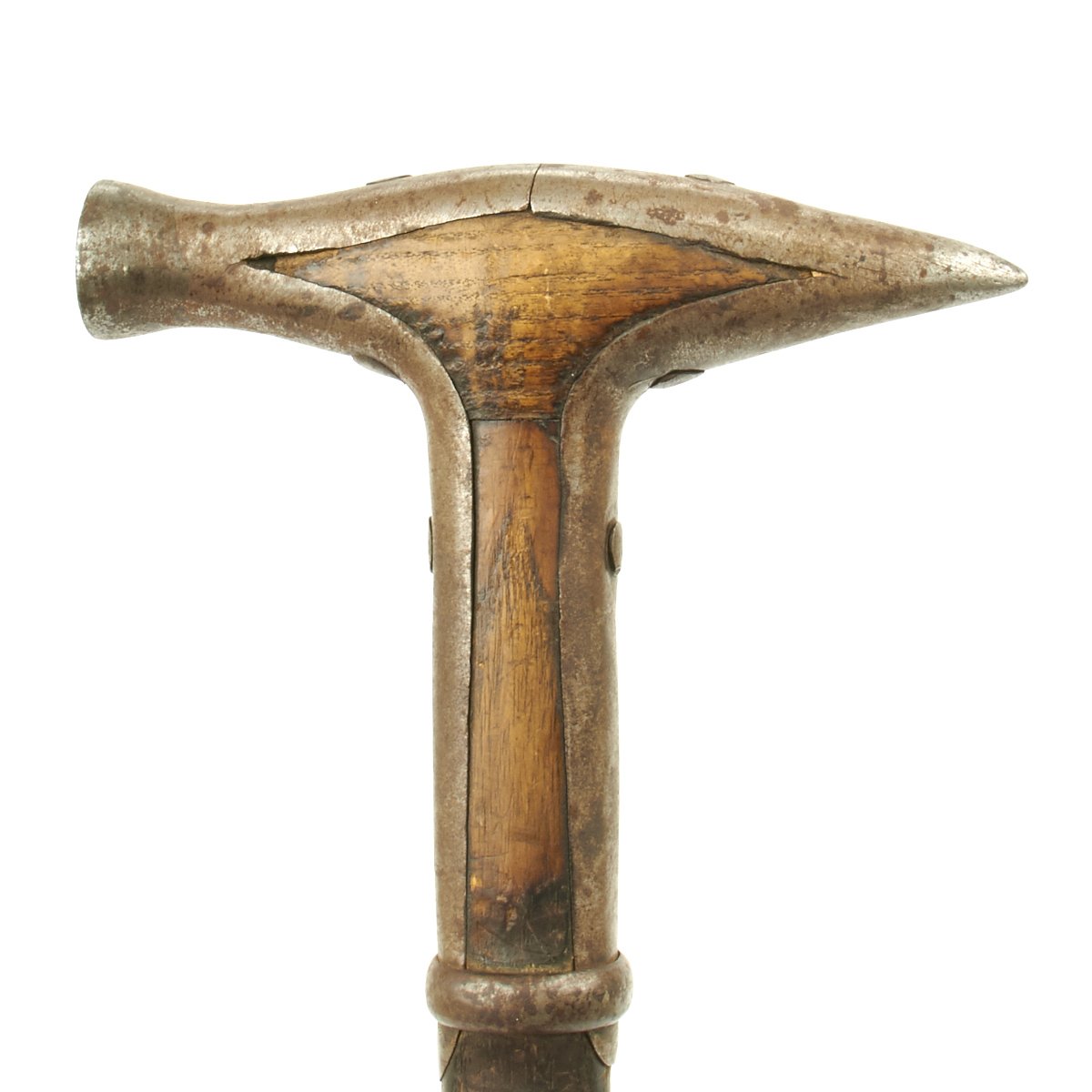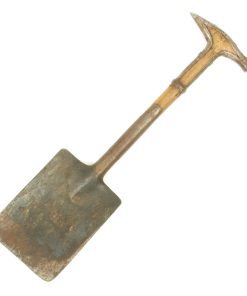Original British Victorian Rare 1883 Wallace Patent Entrenching Tool and Pioneer Spade Original Items
$ 795,00 $ 238,50
Original Item: Only One Available. Few people get excited about military entrenching tools BUT this is the Holy Grail! Entrenching Tools became essential in WWI and then again in WWII however they were first officially introduced during the Victorian era as “essential equipment”.
The rarest of them all is the scarce Wallace Patent entrenching tool patented in 1883 by Nesbit Willoughby Wallace, which was a design of sheer genius. Commonly used with the P-1888 Slade Wallace leather set.
For the very first time we have found an example in truly amazing condition. Nicely stamped on the blade:
WALLACE PATENT
EDWD & WM LUCAS
No. SHEFFIELD
This not only has a well designed square blade with a long support sleeve up the handle shaft, but the “crossbar” at the hilt is cleverly steel wrapped and doubles as a “pick and bladed hammer”. The blade itself is at the top two sheets of steel joined together to surround the shaft of the handle.
This had to be a nightmare and costly to make and one can understand why these are so very hard to come by as almost every one got taken home to somebody’s garden shed!
Offered in great condition and extremely well marked this is one of the few examples we have ever seen. Condition is very good for the age.
An excerpt from the book “The battle of Tofrek” By William Galloway
THE “WALLACE” ENTRENCHING TOOL AND PIONEER SPADE.
The following description of the entrenching tools, used extensively on the 22nd of March in constructing the defences, may be of interest:
“This tool, which weighs about 2 lbs. 5 ozs. and is 23 inches long, is patented in England and America and on the Continent, and has been adopted by the English and South Australian Governments. It is a small spade with a broad blade, and a crosspick for the handle. The pick consists of an armoured wooden crutch, the wood of which forms a strong backing to the steel point, and acts as a buffer against the jar caused by repeated blows. It is covered with steel sheathing, which is in two parts, fits closely to the wooden head, and is fastened on by rivets to the crutch, and by rivets and a band to the handle. Each point is composed of one-inch of solid steel, which, when blunted by use, can be sharpened. One end is a pick, the other a grubber. The metal used is very hard and well-tempered, while the tool is made so as to be easily repaired if damaged. To put it briefly, the chief virtues of the entrenching tool are the simple combination of pick and spade, which is obtained without any complicated arrangement; the shape of the blade; and the projection at the back, which guards the knuckles when digging, and also ‘cants’ the blade to clear the wrist when the pick is used.
“The British Government has just ordered 20,000 of these entrenching tools, having been previously supplied with 30,000. Foreign countries have ordered a supply for an exhaustive trial of their peculiar merits.
“The ‘ Pioneer’ spade, is intended for clearing ground and for bushwork, where the combination of a serviceable billhook with a small pick and spade must often be very convenient.
“Major Wallace’s tools are not intended to take the place of the full-sized ‘Pioneer’ picks and shovels, which will still be necessary for all heavy digging and for rocky ground, though, on an emergency, the ‘Wallace’ spade may be found a fair substitute. It is claimed for these tools that they are of extraordinary strength for their size and weight, and that they may be relied on to stand very severe wear and tear, if fairly used, and even to do work of which, at first sight, they would hardly be thought capable. For instance, they will break down or loophole an ordinary stone or brick wall—though, perhaps, at the cost of some of the spades. Loopholing was successfully carried out with them in the first Egyptian campaign, when they were also found to be useful and efficient substitutes for small axes in cutting firewood, and invaluable in camp life. Numerous testimonials, from general and other officers, and also from civil engineers, are before the writer, in proof of the above. The spades are not offered as cheap tools. They are made of the very best materials—picked ashen shafts and steel of the first quality; and they have to be put together with great care. So long as this is the case the spades can never be cheaply turned out—though a large order can be executed at a considerable reduction in price. Their value depends so entirely upon their quality that the inventor declines to supply them except through his own manufacturer, as he can then guarantee the materials and the workmanship. Messrs. E. Lucas and Son, of Dronfield, are the manufacturers.”—The Illustrated Naval and Military Magazine, July 1885
Fast Shipping with Professional Packaging
Thanks to our longstanding association with UPS FedEx DHL, and other major international carriers, we are able to provide a range of shipping options. Our warehouse staff is expertly trained and will wrap your products according to our exact and precise specifications. Prior to shipping, your goods will be thoroughly examined and securely secured. We ship to thousands clients each day across multiple countries. This shows how we're dedicated to be the largest retailer on the internet. Warehouses and distribution centres can be located throughout Europe as well as the USA.
Note: Orders with more than one item will be assigned a processing date depending on the item.
Before shipping before shipping, we'll conduct a thorough inspection of the items you have ordered. Today, the majority of orders will be delivered within 48 hours. The delivery time will be between 3-7 days.
Returns
The stock is dynamic and we cannot completely manage it because multiple stakeholders are involved, including our factory and warehouse. So the actual stock may alter at any time. It's possible that you may not receive your order once the order has been made.
Our policy is valid for a period of 30 days. If you don't receive the product within 30 days, we are not able to issue a refund or an exchange.
You can only return an item if it is unused and in the same state as the day you received it. You must have the item in its original packaging.
Related products
Uncategorized
Uncategorized
Uncategorized
Uncategorized
Uncategorized
Uncategorized
Uncategorized
Uncategorized
Band of Brothers ORIGINAL GERMAN WWII Le. F.H. 18 10.5cm ARTILLERY PIECE Original Items
Uncategorized
Angolan Rebel 1970s era 60mm Inert Display Mortar from Angolan Civil War Original Items
Uncategorized
Uncategorized
Uncategorized
Uncategorized
Uncategorized
